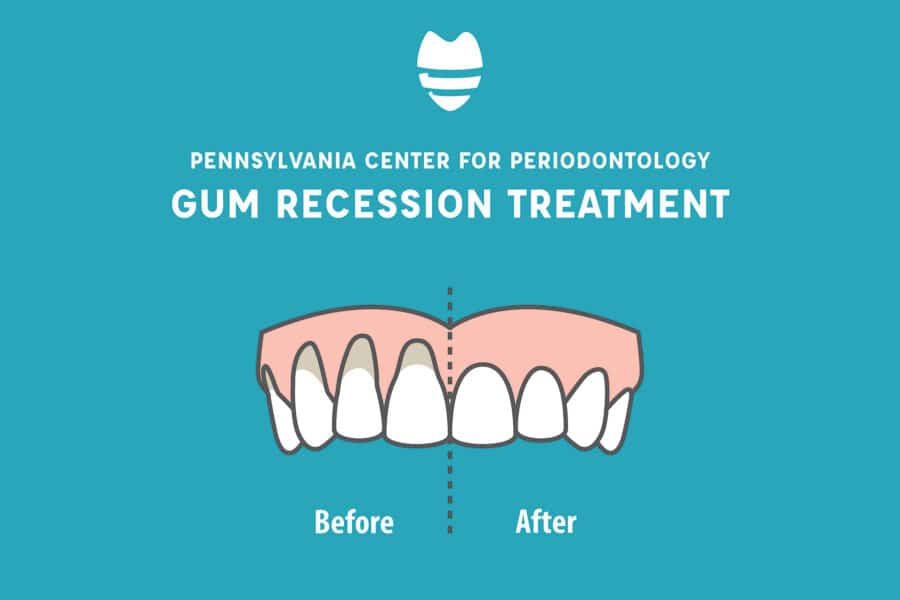Gums are the soft tissue that covers your jawbone and supports your teeth. Healthy gums form a seal against your teeth to keep them protected. Gum recession is the pulling away of gums from around your teeth.
Without that healthy seal, your teeth and gums are vulnerable to disease. Our gums not only support a healthy smile but also an attractive one. Healthy gums offer a shape around our teeth that gives us the best appearance.
Gum recession also exposes the roots of your teeth. Exposed roots are unprotected and can become sensitive. Also, if gums recede, bacteria that cause gum infection can rest at the open gumline and cause periodontal disease.
At your regular dental visits, your dentist and hygienist will monitor your gums for signs of disease, including checking for signs of recession. If you have gum recession, there are options for prevention and treatment.
CAN MY GUM RECESSION BE TREATED?
If you want to know if your recession can be treated, you should know what has caused your recession in the first place.
- Am I Brushing Too Hard?
- Am I a Smoker?
- Do I Have Periodontal Disease?
- Do I Have Ill-fitting Partials Dentures?
- Do Others in My Family Have Gum Recession?
- Is My Gum Recession Very Noticeable?
- Do I Grind or Clench My Teeth?
Once you and your dentist have discussed what is causing your recession, you can talk about ways to treat it. Treatment for your gum recession depends on how advanced it is.
Mild Recession:
Mild recession can be left alone and simply monitored. If you know what is causing your recession, like brushing too hard, grinding your teeth, or wearing partials that don’t fit well, you and your dentist can make changes to prevent further recession.
You can help your gums by:
- Modifying your brushing with a softer toothbrush.
- Having your dentist make you a nightguard.
- Getting new partials or adjusting your current ones to fit better.
Advanced Recession:
Advanced gum recession is often more noticeable and requires advanced treatment because the gums are no longer attached and will often continue to recede without help from a periodontist, who is a gum treatment specialist. If your dentist refers you to a periodontist, just know that you are in the best hands to treat your recession.
After a complete examination, your periodontist can recommend the treatment that is best for you, which may include surgical correction.
HOW DOES A PERIODONTIST TREAT GUM RECESSION?
Periodontist perform gingival grafts that are gum grafts to help thicken and rebuild lost gums.
Repair of your gums can happen by having a graft that is done one of three ways:
- Free Gingival Graft – This type of graft is done thicken gum tissue that has been thinned. To achieve this, a small layer of gum tissue is removed from the palate (roof of the mouth) and relocated to the area affected by gum recession. This type of graft is less about esthetics (cosmetic appearance) and more about protection of the tissue.
- Connective Tissue Graft – This type of graft is commonly used to cover exposed tooth roots. Tissue is removed from a specific layer of the palate and relocated to the site of gum recession. This type of graft can often reduce the appearance of long or discolored teeth, which can improve cosmetic appearances.
- Allograft (alternative material graft) – This type of graft uses alternative graft material versus using gum tissue from your palate. This means that rather than two sites of the surgery, you only have one, which may reduce discomfort.
CAN I PREVENT FUTURE RECESSION?
Yes! Maintenance is the key when it comes to your gums, whether you have had mild or advanced gum recession.
Practicing good homecare, regularly visiting your dentist and periodontist, and modifying risk factors can help to prevent future gum recession and keep you smiling!
